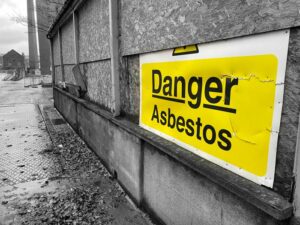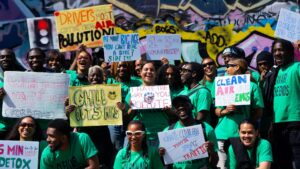Irmina Kotiuk, Senior Lawyer and Fundamental Rights Specialist in the clean air programme at environmental law charity ClientEarth, explains how human rights law can be used to fight for clean air.
There is by now overwhelming scientific evidence showing that air pollution has disastrous impacts on people’s lives. Yet courts are only just beginning to recognise the link between one’s health and the levels of air pollution in their environment. The concepts of right to life and right to health are well-established human rights concepts and we are gearing up to see them applied more and more to air pollution.
The courts’ slow recognition of the impacts of air pollution on people
The damages caused by air pollution to people’s health is, by this point, unequivocal. Air pollution affects the health and quality of life of people across the world on a daily basis. World Health Organization (WHO) experts decided that the new evidence on the adverse effects of air pollution demanded a response – and as a result made their guidelines more stringent in September 2021.
Let us not forget that protecting people’s health is not only essential for wellbeing, but it also has tangible economic benefits. Analysis carried out by the Confederation of British Industry concluded that work absences related to poor air are costing Britain about £600m annually.
While the evidence base on air pollution impacts is strong, judges have been slow to catch up. Two recent cases are changing this – by bringing the dangers of air pollution beyond statistics to an acutely personal level.
In 2020, a court in France quashed an expulsion order against a Bangladeshi immigrant living in France because his country of origin has very high levels of air pollution that would be detrimental to his asthma. The court recognised the link between the man’s asthma and air pollution in Bangladesh. It acknowledged that his asthma would be aggravated there and, combined with the standard of healthcare in Bangladesh, that would significantly increase his risk of death.
UK readers will also be familiar with the case of Ella Adoo-Kissi-Debrah, who lost her life to a fatal asthma attack in 2013. Thanks to her mother’s tenacity, a London coroner recognised in 2020 that the 9-year-old had died of “asthma contributed to by exposure to excessive air pollution”. The coroner’s unambiguous finding about Ella is a legal first in recognising the role air pollution has played in an individual’s death.
While these cases do not technically set precedents, the possibility of making the link between excessive air pollution and health or life protection in a court of law now seems like less of a leap.
And on top of that, the possibility of including human rights arguments can help air pollution victims build even stronger cases.
Engaging human rights in air pollution cases
One-third of the world’s countries do not have any legally-binding standards on air pollution. Even where such laws exist, standards often misalign with what top scientists at the WHO recommend. And alarmingly, when such laws are in place, some governments like the UK Government are openly flouting those rules.
That’s why ClientEarth, on top of continuing our work to make sure that national governments respect their own laws on air pollution, is also exploring ways to make sure that people live in an environment where healthy air is the norm.
As a human rights lawyer, I approach the air pollution issue from the perspective of fundamental rights. The health damage and risks to life posed by air pollution naturally extend to the questions of protecting the right to life and the right to health, which are well-established concepts within the human rights legal framework.
Right to life
The legal basis is particularly strong when it comes to the right to life. The United Nations Human Rights Committee couldn’t have been clearer: the duty to protect life implies that States should take appropriate measures to address environmental degradation as it constitutes some of the most pressing and serious threats to the ability of present and future generations to enjoy their lives to the fullest.
The same applies in Europe. The European Court of Human Rights (ECtHR) recognised the risk to life from environmental disasters. In one of its cases, the ECtHR concluded that a flood created an imminent risk to the lives of local people as they tried to flee their homes to escape – despite them not suffering any injuries.
There is no reason why this rationale shouldn’t extend to air pollution. People who are exposed to air pollution far exceeding standards recommended by top scientists are exposed to a threat to life – even if that threat has not yet materialised. We will inevitably see more court cases in the future where claimants will invoke their right to life when States fail to reduce and control air pollution, which is having an impact on their health.
Right to health
Another important right that one may invoke in the legal fight against air pollution is the right to health.
Health-related cases have been embraced before the ECtHR mainly under Article 8 – the right to respect for private and family life. The notion of private life has been interpreted to cover one’s physical and psychological integrity including health. In the context of air pollution, the ECtHR clearly stated that air pollution is potentially harmful to health and makes people more vulnerable to other illnesses that can lead to a violation of their right to respect for private life. The ECtHR also stated that soot and respirable dust particles can have a serious detrimental effect on health, in particular in densely populated areas with heavy traffic.
This opens up possibilities for clean air lawyers. If States are violating air pollution laws and limits, including those set by EU law or WHO guidelines, that may of itself amount to a violation of Article 8.
Environmental law is going from strength to strength, as governments recognise the large amount of environmental hazards facing societies today. But when environmental hazards threaten the health and wellbeing of people, human rights law can also be applied to alleviate the burden of air pollution victims and ensure that governments are driven to action.
















I have been harping on about this for years – thank you so much for this brilliant article.